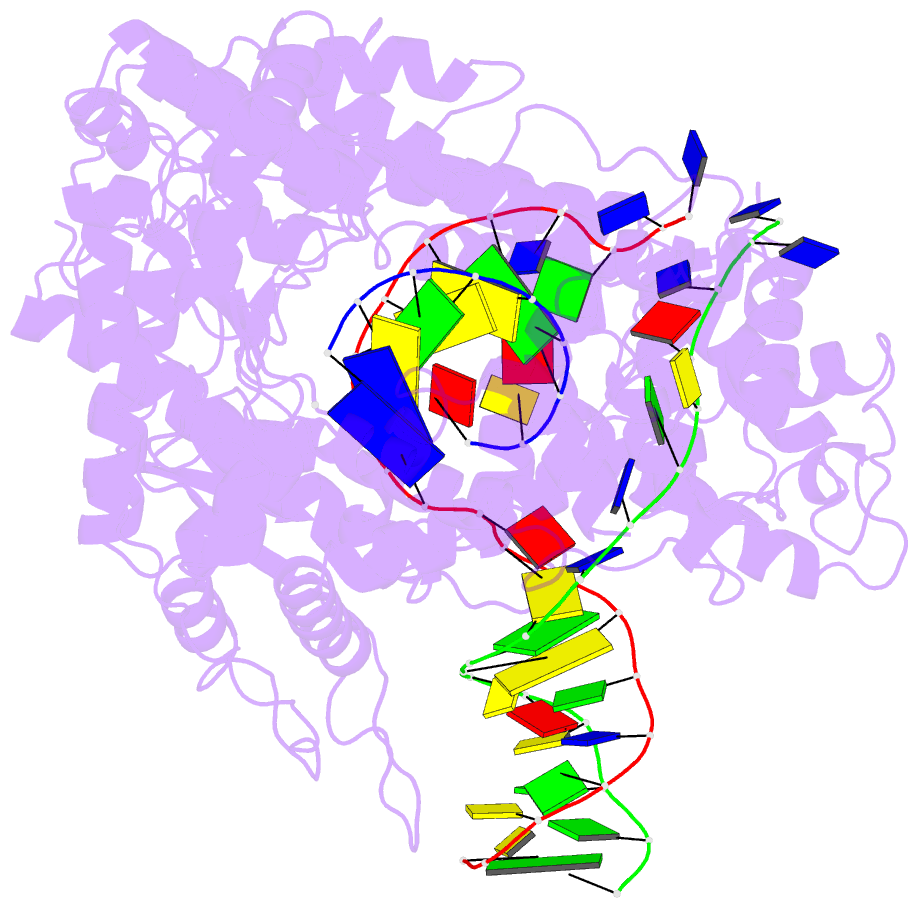Summary information and primary citation
- PDB-id
- 1s76; SNAP-derived features in text and JSON formats;
DNAproDB
- Class
- transferase
- Method
- X-ray (2.88 Å)
- Summary
- T7 RNA polymerase alpha beta methylene atp elongation complex
- Reference
- Yin YW, Steitz TA (2004): "The structural mechanism of translocation and helicase activity in T7 RNA polymerase." Cell(Cambridge,Mass.), 116, 393-404. doi: 10.1016/S0092-8674(04)00120-5.
- Abstract
- RNA polymerase functions like a molecular motor that can convert chemical energy into the work of strand separation and translocation along the DNA during transcription. The structures of phage T7 RNA polymerase in an elongation phase substrate complex that includes the incoming nucleoside triphosphate and a pretranslocation product complex that includes the product pyrophosphate (PPi) are described here. These structures and the previously determined posttranslocation elongation complex demonstrate that two enzyme conformations exist during a cycle of single nucleotide addition. One orientation of a five-helix subdomain is stabilized by the phosphates of either the incoming NTP or by the product PPi. A second orientation of this subdomain is stable in their absence and is associated with translocation of the heteroduplex product as well as strand separation of the downstream DNA. We propose that the dissociation of the product PPi after nucleotide addition produces the protein conformational change resulting in translocation and strand separation.





